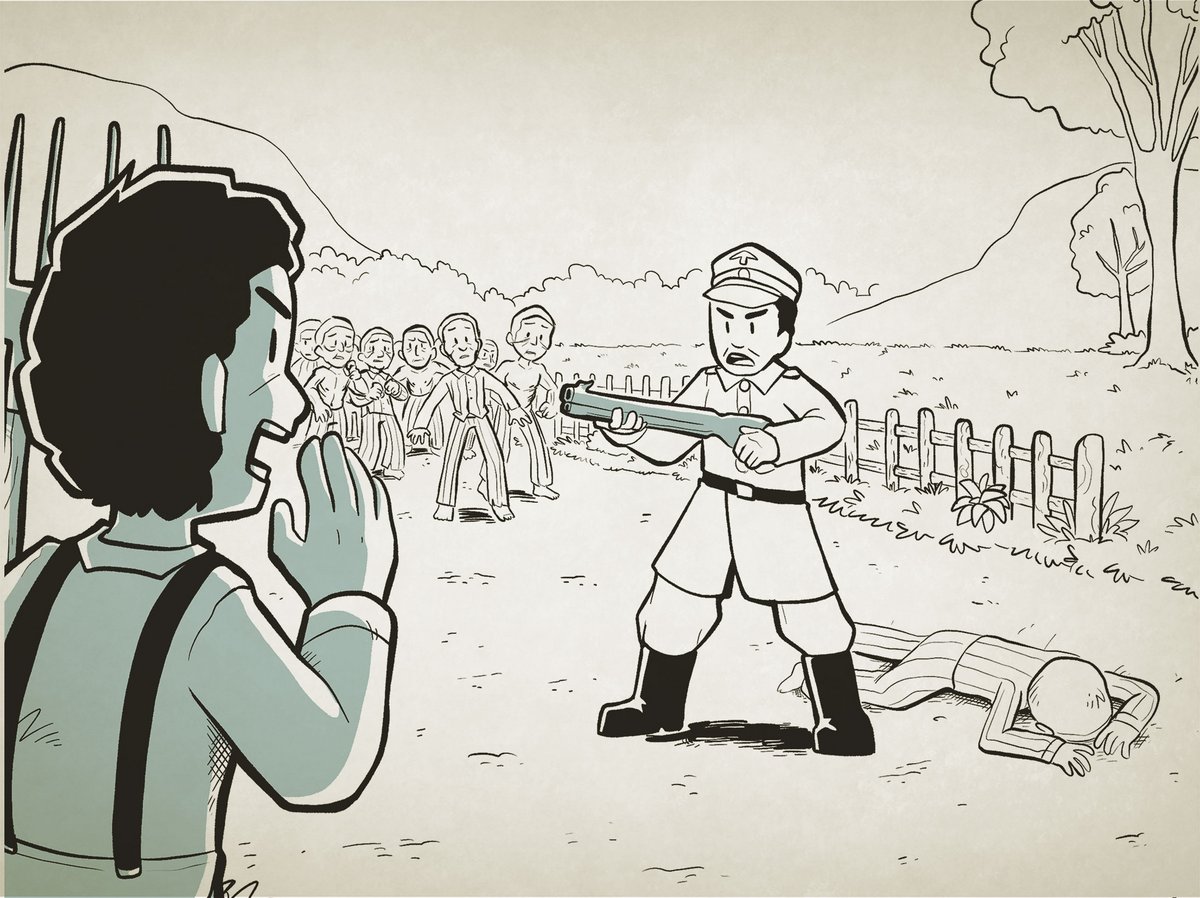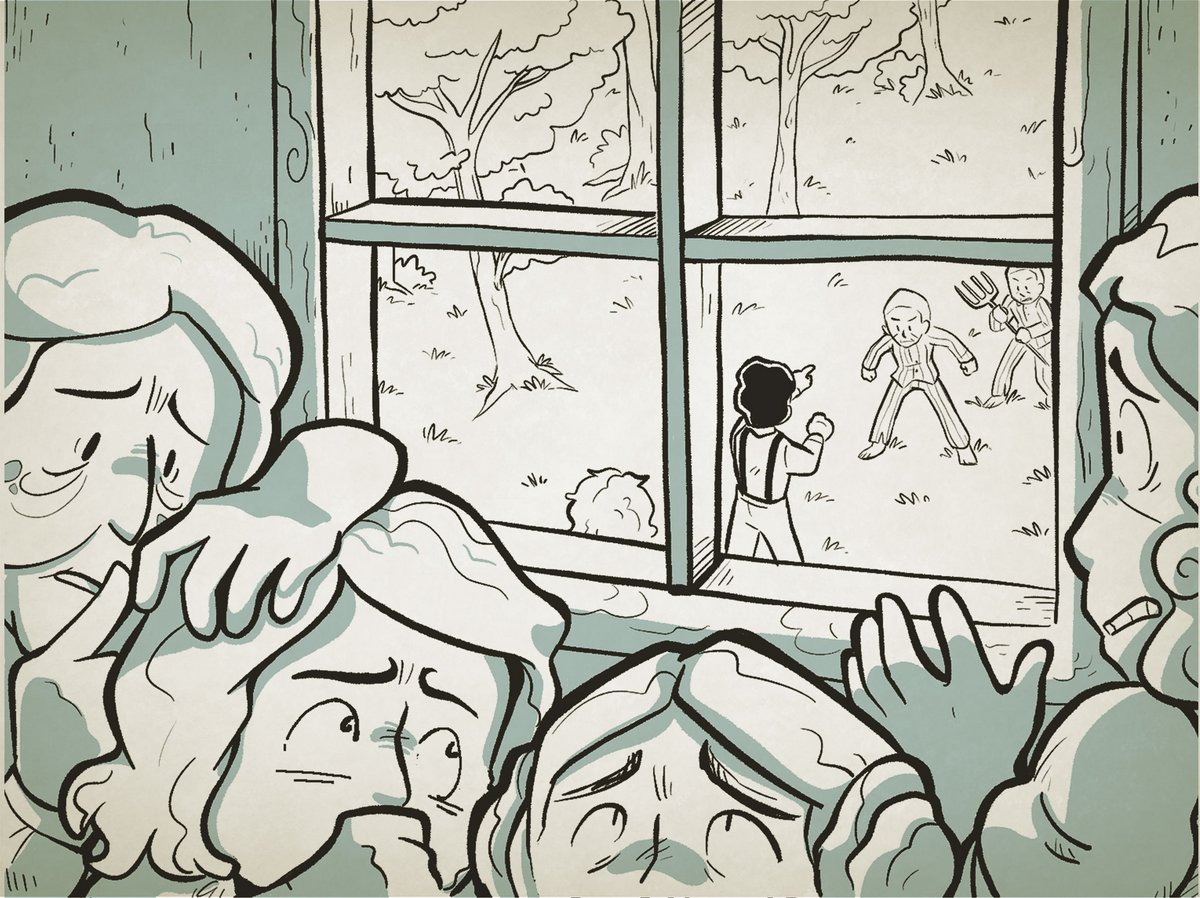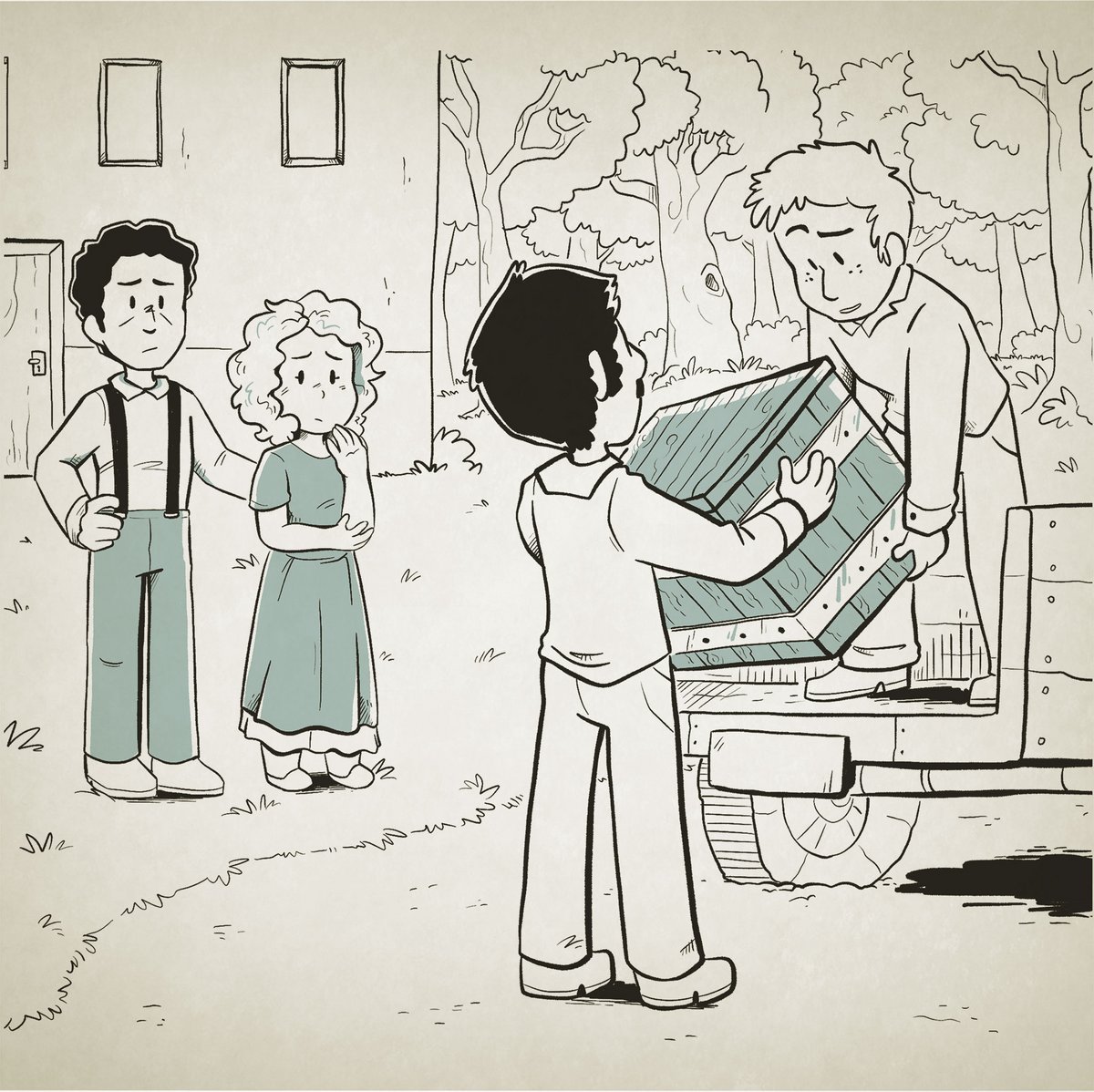In 1938, in a small town in Upper Austria, one of the many Nazi concentration camps was constructed. It was known as the Mauthausen concentration camp. It existed from 1938 to 1945. The camp was run and guarded by the SS. The people who were imprisoned here came from many countries in Europe: Poland, Russia, France, Italy, Germany, Austria and others.
They were political opponents, belonged to marginalised groups (e.g. ‘criminals’, ‘asocials’) or were persecuted for anti-Semitic and racist reasons (e.g. Jews). Most of the prisoners were men, but there were also women and children. In the Mauthausen quarry, the prisoners carried out hard forced labour.
In the more than 40 subcamps (Gusen, Steyr, Linz, Ebensee, Vienna ...), they were deployed in the arms industry. People lived in overcrowded accommodation. They were not given enough food and clothing, and they starved and died of diseases. SS men beat many prisoners to death, shot them or murdered them in the gas chamber at Mauthausen. In total, almost 200,000 people were imprisoned at Mauthausen and its subcamps. Half of them lost their lives.
The Mauthausen concentration camp was on a hill and could be seen for miles around. Many people were involved with the camp: they worked there, brought deliveries or knew SS men. Almost everyone knew about the death camp. Often, the SS men committed the crimes in full view of the population. On 5 May 1945, the Mauthausen concentration camp was liberated by US troops.
Here you will read the story of a person who was connected with the Mauthausen concentration camp.
Johann Kraft
Text: Christian Angerer – Illustration: Alena Ertl

Johann Kraft is born in 1894. He comes from a working-class family in Haid near Mauthausen. Johann Kraft works at a number of different companies until he is forty years old.
After the First World War, he starts a family with his wife Anna. They have three children. Kraft advocates for workers’ rights as a member of the Social Democratic Workers’ Party. In the 1920s, he is deputy mayor of Haid near Mauthausen.

In 1933, the Christian Social government led by Engelbert Dollfuß abolishes democracy and introduces the authoritarian ‘Ständestaat’ (‘corporate state’). Socialist workers rise up against this dictatorship in February 1934. After they are defeated, the Social Democratic Party is banned.
During this time of political oppression and unemployment, Johann Kraft uses an inheritance to buy a farm in the Ufer district of Mauthausen. He and his wife, Anna, cultivate crops and rear cows, pigs and horses.
After the ‘Anschluss’ of Austria to Nazi Germany in March 1938, the Kraft family gets a new ‘neighbour’: in the summer, the Mauthausen concentration camp is built on neighbouring land. Several farmers including Kraft have to sell land to the SS so that they can use it for the concentration camp. Like many people from the surrounding area, Johann Kraft witnesses the crimes at the camp. In 1965, he says in an interview: ‘I saw prisoners being mistreated on many occasions. I also saw prisoners being shot.’
When an SS settlement is planned, Kraft again has to make available large plots of land. The SS offers him a farm in Slovenia or in the East in return for the land, but he does not want to move away with his family. He therefore keeps possession of the land and receives compensation because he is no longer able to use the fields for crops.
From 1941 onwards, concentration camp prisoners in a labour detachment have to build the SS settlement very close to the farm. Sometimes the SS makes concentration camp prisoners available to the farmers in the area. On one occasion, two prisoners – overseen by SS guards – repaint Kraft’s farm. The SS people allow the Kraft family to give food to the prisoners. They even barter with some of the SS and the prisoners: in exchange for food, the Kraft family receives small pictures and figurines made by prisoners in the concentration camp.

A neighbourly relationship develops between the Kraft family and the SS settlement. The wives of the SS men get milk and potatoes from the farm. Berta Strauß, the wife of the head of administration at the Mauthausen concentration camp, enjoys helping with the hay harvest. SS man Karl Baumgart sometimes helps with ploughing. The children of the SS are often on the farm.
Johann Kraft also gets along well with camp commandant Franz Ziereis, whose villa is also located near Kraft’s farm. On one occasion, Kraft shouts to an SS guard who is beating prisoners: ‘You don’t have to beat people like that!’ The SS man threatens to shoot Kraft. After this incident, Ziereis advises Kraft not to say anything when prisoners are driven past.

At the beginning of May 1945, before the US troops arrive, the SS people go into hiding. The Baumgart family leaves a large basket of clothes on the farm. The wives of escaped SS men hide for a time on the upper floor of the farmhouse. Liberated concentration camp prisoners want to take revenge on the women, but Johann Kraft protects them.
After the Mauthausen concentration camp is liberated, first US soldiers and then Soviet soldiers move into the SS accommodation. Because housing is scarce in the post-war period, people looking for accommodation are housed in the SS settlement. From 1946, the settlement is called the ‘Bernaschek-Siedlung’ after Social Democrat Richard Bernaschek, who was murdered in the Mauthausen concentration camp in 1945.

The Kraft family stays in contact with some former SS men after 1945. In 1948, Johann Kraft writes a letter to Berta Strauß, whose husband has been sentenced to a long prison term. Kraft says: ‘The settlement isn’t how it used to be; we often think of times gone by. Hopefully Mr Strauss will come home soon. It is sad for you because you have lost everything. […] Hopefully we will be able to meet again soon and talk.’ Former SS man Karl Baumgart, who was never convicted, comes to the farm to pick up the basket of clothes.
Johann Kraft tries unsuccessfully to get his land back. The housing settlement is eventually given to the municipality of Mauthausen. Johann Kraft becomes politically active again in 1945 as a member of the Austrian Socialist Party (SPÖ). For many years he is deputy mayor of Mauthausen.
Johann and Anna Kraft sell their farm in 1958 and move with their children and grandchildren to the centre of Mauthausen. Kraft is able to talk to anyone, including political opponents, which makes him very popular in the town. One of his many friends is a former Spanish concentration camp inmate who now lives in the town of Mauthausen.
Johann Kraft dies in Mauthausen in 1967.
- 1894 Johann Kraft is born in Mauthausen
- 1914 28 July – Start of the First World War
- 1918 11 November – End of the First World War
- 1920s Social Democrat deputy mayor of Haid near Mauthausen
- 1933 30 January – Adolf Hitler becomes Reich Chancellor in Germany
- 1933 The Krafts purchase a farm in Mauthausen
- 1934 February – Civil War in Austria
- 1938 12 March – ‘Anschluss’ (‘Annexation’) of Austria to Nazi Germany
- 1938 8 August – Construction begins on the Mauthausen concentration camp
- 1938 to 1945 Johann Kraft witnesses the mistreatment and murder of concentration camp prisoners
- 1939 1 September – Start of the Second World War
- 1940 Johann Kraft has to provide land for an SS settlement
- From 1941 Concentration camp prisoners have to build the SS settlement
- From 1941 The Krafts are friendly with SS people and their families
- 1945 5 May – The Mauthausen concentration camp is liberated by the US Army
- 1945 8 May – Nazi Germany surrenders; end of the Second World War in Europe
- From 1945 Johann Kraft’s stays in contact with former SS people and former concentration camp inmates
- After 1945 Social Democrat deputy mayor of Mauthausen
- 1946 The settlement is renamed the ‘Bernaschek-Siedlung’
- 1967 Johann Kraft dies in Mauthausen
Further reflection in groups...
Johann Kraft lives very close to the Mauthausen concentration camp. What negative experiences does he have as a neighbour of the camp? What positive experiences does he have?
Which of these statements about Johann Kraft do you completely agree with, partially agree with, or disagree with? What do you learn about the statement in the text and in the pictures? Give reasons for your answer.
- He has nothing to do with the concentration camp.
- He resists.
- He is forced by the SS to take part.
- He is complicit.
- He tries to make the best of the difficult situation.
- He could also make other decisions.
What do you think about the letter Johann Kraft writes to Mrs Strauss in 1948?
During your tour of the Mauthausen Memorial, find out where the SS settlement now known as the ‘Bernaschek-Siedlung’ was located.